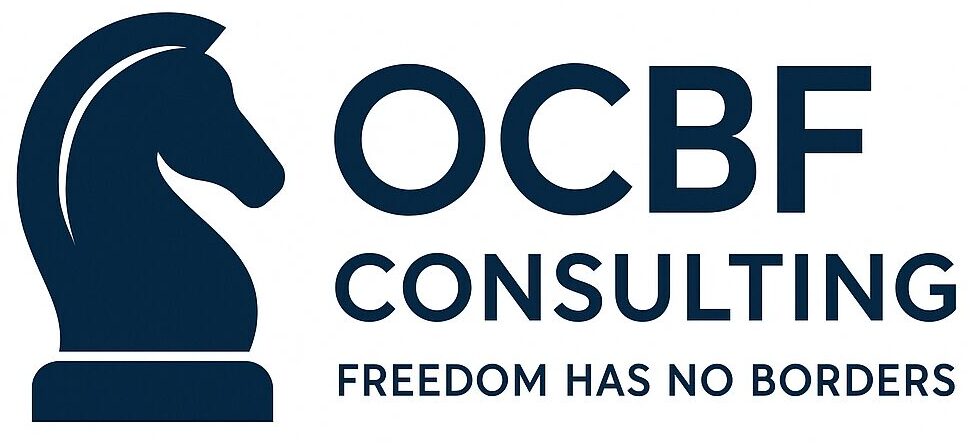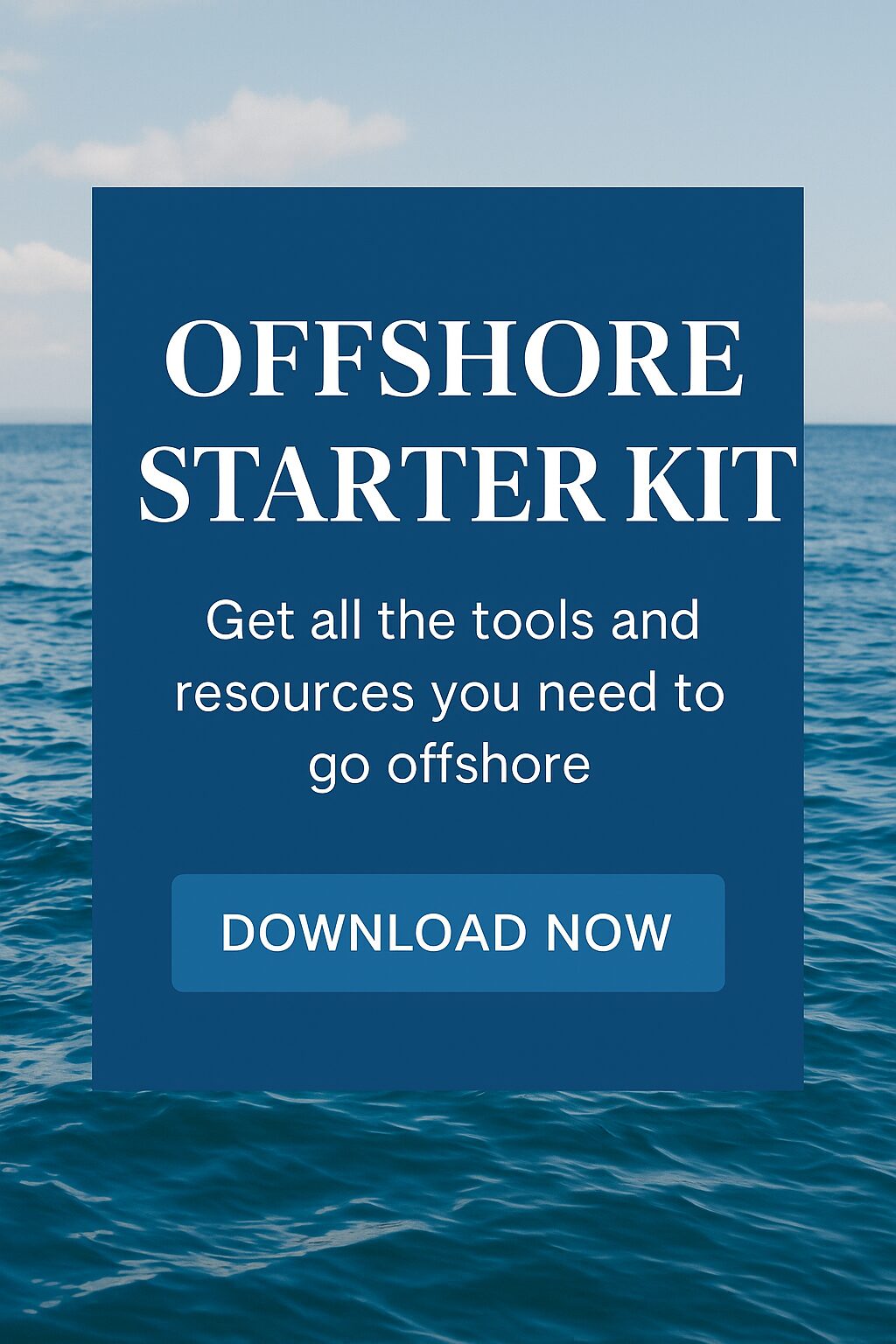Why So Many Offshore Applications Fail
Thinking of opening an offshore bank account? You’re not alone. Whether for asset protection, business expansion, or financial privacy, offshore banking is more appealing than ever in 2025.
But here’s the problem: more than half of applications get rejected.
The issue isn’t just where you apply—it’s how you apply. Too many people choose the wrong bank, submit vague paperwork, or underestimate the importance of presenting themselves professionally. In this guide, we’ll walk you through the smart way to open an offshore bank account without setting off red flags.
If done right, an offshore bank account can be a legal, secure, and efficient way to safeguard your wealth and access global markets.
Get Our: Complete Offshore Banking Guide

Common Reasons Your Offshore Bank Application Gets Rejected
Offshore banks are becoming increasingly selective. Here’s why they might turn you down:
- Poor documentation – Sloppy or missing paperwork is the #1 reason for rejection.
- Unclear source of funds – If you can’t prove where your money comes from, banks won’t take the risk.
- Wrong jurisdiction – Applying in the wrong country for your nationality or business type raises compliance flags.
- No business substance – Banks want to see real activity, not just a shell company with a mailbox.
- Inconsistent application story – If your background, documents, and company website don’t align, the bank will get suspicious.
Getting rejected often means a 6–12 month “cooling off” period before you can apply again. So it pays to get it right the first time.

What Offshore Banks Are Really Looking For
Banks aren’t trying to be difficult—they just want to know who they’re dealing with. Here’s what they’re actually screening for:
- A legitimate purpose – Why are you opening an offshore account? Asset diversification, international business, or privacy are all valid—just be clear and honest.
- Clean, complete KYC – Expect to provide a valid passport, proof of address, and sometimes tax returns or reference letters.
- Business profile – If it’s a corporate account, your company must be properly incorporated and have at least a minimal web presence or operating history.
- No red flags – Past criminal history, lawsuits, or politically exposed status (PEP) may trigger rejection or enhanced scrutiny.
- Substance over structure – A holding company is fine—but you’ll still need to show intent or some level of real activity.
Best Offshore Banking Jurisdictions for 2025
Not all jurisdictions are created equal. Here are five offshore banking destinations that still offer reasonable access, privacy, and ease of use:
Belize
- Great for privacy-focused individuals and small businesses.
- English-speaking and friendly compliance processes.
- Ideal for those pairing with Belize IBCs.
Georgia
- One of the easiest places for individuals to open personal accounts.
- Fast setup, low fees, and minimal bureaucracy.
- Walk-in accounts available for many nationalities.
Puerto Rico
- Excellent for U.S. citizens and residents due to unique tax treatment.
- Compliant but more favorable than U.S. mainland banks.
- Great for crypto entrepreneurs and remote business owners.
Cook Islands
- Excellent for asset protection and trust structures.
- Banks are selective, but approvals are possible with proper documentation.
- High level of legal protection.
Nevis
- Great for LLC structures and privacy seekers.
- Offshore banking goes hand-in-hand with Nevis corporations.
- Popular among asset protection planners.
Step-by-Step: How to Open an Offshore Bank Account (and Actually Get Approved)
Step 1: Define Your Purpose
Are you trying to:
- Hold savings outside your home country?
- Run an international e-commerce business?
- Protect assets from future lawsuits?
Your answer helps determine the right jurisdiction and bank.
Step 2: Choose the Right Jurisdiction for Your Offshore Bank Account
Match your needs to a jurisdiction:
- Privacy? → Nevis or Cook Islands
- Easy setup? → Belize or Georgia
- U.S. citizen-friendly? → Puerto Rico
Pro tip: Avoid applying to too many banks in different jurisdictions. It triggers suspicion and wasted time.
Step 3: Get Your Documents in Order
At minimum, expect to provide:
- Passport copy (certified)
- Proof of address (utility bill, less than 3 months old)
- Source of funds (bank statements, contracts, or invoices)
- Company documents (if a business account)
- Website or business plan
Some banks may ask for tax returns or letters of reference from existing banks.
Step 4: Present a Clean, Clear Profile
This is where most people fail.
Make sure:
- Your documents are organized, translated if necessary, and notarized.
- Your business has a working website and email address.
- You can clearly explain your business model or personal situation.
Even if your company is new, show substance: a business plan, domain name, social media presence, or invoice pipeline helps.
Step 5: Apply Directly or Use an Agent
Some banks allow remote onboarding. Others require in-person meetings or introductions via approved agents.
Using an offshore incorporation firm or service provider can dramatically improve your chances. They’ve worked with the bank before and know exactly what documentation passes.
Step 6: Due Diligence Review
After submission, your file goes through a due diligence process. This usually takes 1–3 weeks. If your documentation is solid, approval follows with account setup instructions.
You’ll receive:
- Your IBAN / account number
- Internet banking login
- Optional debit or prepaid cards
Then you can fund the account and begin using it.

Pro Tips to Avoid Getting Rejected
- Don’t apply with mismatched documents – All addresses, names, and registration numbers must match.
- Have a “story” that makes sense – Your purpose, structure, and operations must feel coherent.
- Avoid high-risk industries unless you’ve got clean history and strong documentation.
- Stay away from blacklisted jurisdictions that draw scrutiny (e.g., sanctioned countries).
- Be prepared to explain your source of funds—vague or “crypto gains” without proof will raise alarms.
Offshore Bank Account: Real-World Mini Scenarios
Case 1: A Crypto Nomad in Portugal
Maya, a digital nomad based in Portugal, wanted to bank her crypto profits. Her U.S. accounts kept flagging incoming transfers. She used a Belize LLC and opened an account in Georgia, with help from an agent. She submitted wallet screenshots, tax filings, and a simple portfolio site. Approved in 2 weeks.
Case 2: Consultant Using Puerto Rico
Thomas, a U.S. citizen, moved to Puerto Rico to benefit from Act 60. He needed a compliant bank with USD access. He opened a corporate account tied to his PR LLC and gained smoother Stripe payouts and tax benefits.
Common Myths About Offshore Banking
- “It’s illegal” – Totally false. Opening a foreign account is legal in most countries, including the U.S., as long as you declare it.
- “It’s only for the rich” – Many offshore banks have low minimums ($500–$5,000).
- “You don’t have to pay taxes” – While offshore accounts may help optimize your taxes, they don’t erase your obligations. U.S. citizens, for example, must report under FBAR/FATCA.
Conclusion: Go In Prepared, Come Out Approved
Opening an offshore bank account in 2025 isn’t rocket science—but it does take preparation. Understand what banks want, gather the right documents, and present yourself professionally.
Done right, you’ll gain access to a more flexible, private, and globally connected banking system that supports your freedom and financial future.
And remember, this is just one part of a robust offshore strategy. Be sure to check out our Ultimate Offshore Guide for 2025 for everything you need to structure your privacy, protection, and prosperity.










